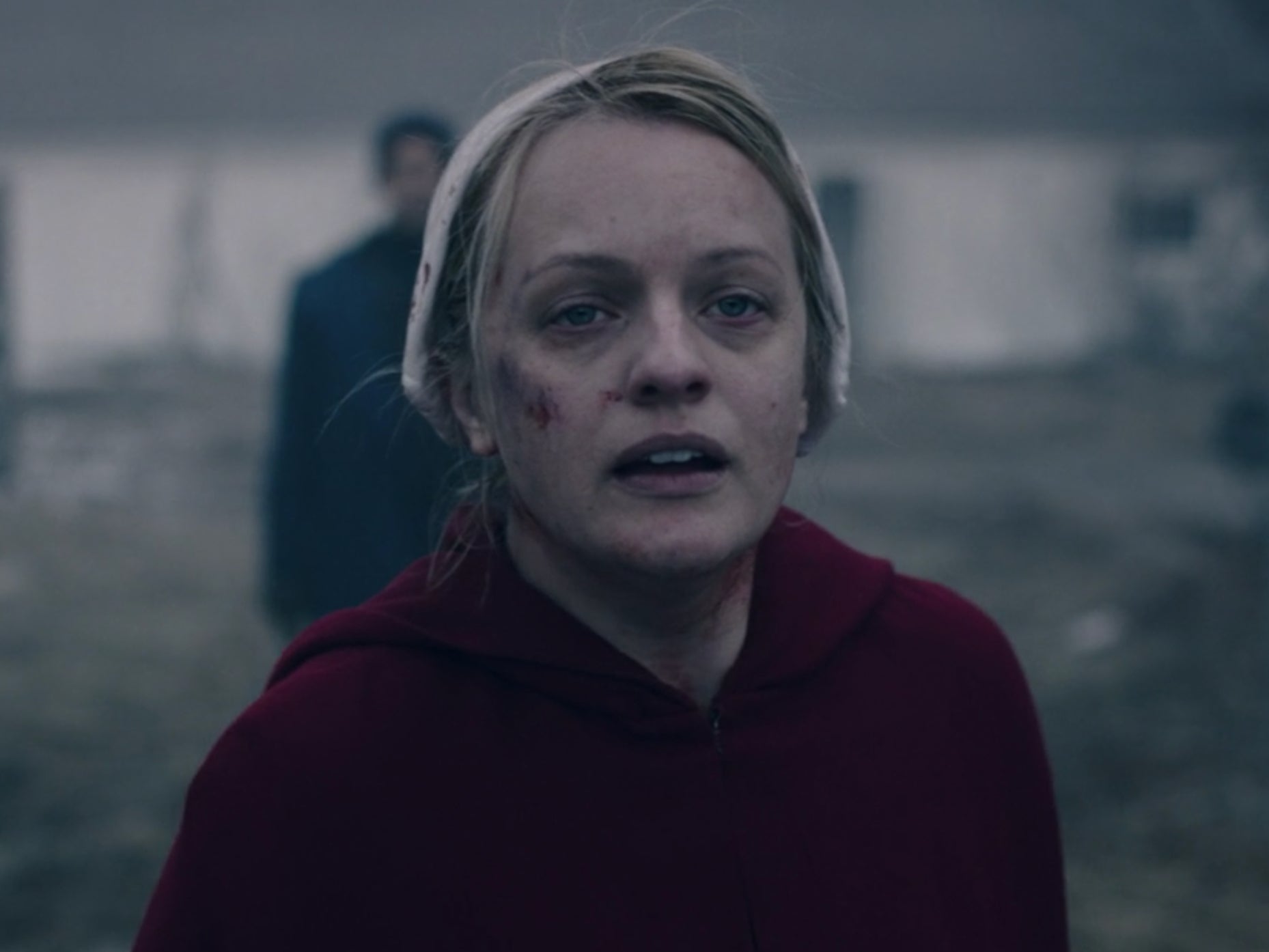Yes, The Handmaid’s Tale is dark. But it’s not trauma porn
The dystopian drama, which is back for a fourth season in the US, has never shied away from gore. But for Clémence Michallon, the accusations of ‘torture porn’ have never rung true


Your support helps us to tell the story
From reproductive rights to climate change to Big Tech, The Independent is on the ground when the story is developing. Whether it's investigating the financials of Elon Musk's pro-Trump PAC or producing our latest documentary, 'The A Word', which shines a light on the American women fighting for reproductive rights, we know how important it is to parse out the facts from the messaging.
At such a critical moment in US history, we need reporters on the ground. Your donation allows us to keep sending journalists to speak to both sides of the story.
The Independent is trusted by Americans across the entire political spectrum. And unlike many other quality news outlets, we choose not to lock Americans out of our reporting and analysis with paywalls. We believe quality journalism should be available to everyone, paid for by those who can afford it.
Your support makes all the difference.The Handmaid’s Tale has always had a dark heart. How could it not? The TV series, based on Margaret Atwood’s 1985 novel of the same name, has violence at its core. In the dystopian world imagined by the author, the United States (now known as Gilead) has systematically deprived women of their bodily autonomy. They are sorted into various roles, including that of Handmaid – a woman separated from her family and assigned to a married couple, with the (very non-optional) mission of bearing them healthy children. Naturally, that mission involves ritualised rape, forced pregnancies, and the involuntary separation of the biological mother from her offspring.
The TV adaptation, now back for a fourth season in the US, has remained faithful to this framework. For more than 30 episodes, we have watched June (Elisabeth Moss) make her way in this terribly oppressive world. Along the way, the show showed many acts of violence, unflinchingly so, but never gratuitously.
When we left June at the end of season three, she had accomplished part of her latest goal, having freed 86 children. June was as good as left for dead, having been shot by a soldier. In the season four premiere, she’s rescued by her fellow former Handmaids and brought to a farm, where the women live somewhere between autonomy and resistance – and under the unpredictable leadership of the young Mrs Keyes, a teenage girl eager to join the fight against Gilead.
The Handmaid’s Tale has never shied away from gore. We have seen blood. A lot of it. We have seen a woman’s eye gouged out. We have seen transgressors getting hanged. We have seen death. We have seen rape. We have seen a thousand shades of brutality.
For those reasons, some have deemed the series problematic, or likened it to “torture porn” or “trauma porn”. But it’s a description that has never rung true to me – even as the season four opener brought me deeper into Gilead’s darkness.
The new series wastes no time inflicting bodily harm on June: from the first few minutes, one of her allies must essentially brand her with a hot iron to cauterise one of her bleeding wounds. The episode ends as violently as it could, with the women turning onto a man found on the Keyes’s property.
Depicting such violence is certainly a choice. It also means the series might not be for everyone. But The Handmaid’s Tale is a dystopia, and so it makes sense to interpret it as a fable, a symbol for something larger. It’s worth remembering that the show’s boom in popularity came during the Trump administration, when reproductive rights (among many others) were increasingly threatened. It came after the then-president-elect, asked what women should do if abortion were outlawed at a federal level and they lived in a state where it’s not permitted, dismissively declared: “They’ll have to go to another state.”
It’s not just the Trump administration. The US has the highest maternal mortality rate when compared to similarly wealthy countries – in other words, you’re at a significantly higher risk to die as a result of pregnancy if you live in the US than, say, the UK or France. This is relevant context for Handmaid’s. That fear? That feeling of doom? The possibility of your body being used against you, of being neglected to the point of no return? We have felt it. We have felt it in our bones, and there is something that rings true in the way it gets translated onto the screen.
The violence in Handmaid’s is jarring precisely because it’s not played for laughs. There are no farcical effusions of blood, no cartoonesque escalation bringing us back to the safety of humour. That doesn’t mean the show devolves into gratuitousness. On the contrary, there is something compelling in its use of violence. In the season four opener, as it has in the previous three seasons, physical and mental cruelty often comes as the result of one’s own trauma and oppression.
Such is the case when June decides what to do with the guardian caught on the farm. Yes, she and the other women turn on the man in a cruel, brutal way. But where do you think they learnt such behaviour? In earlier seasons, Handmaids were made to stone their transgressive peers to death. The narrative is clear, efficient: the seed of violence was planted in them by Gilead. The system’s own chickens have come home to roost. If anything, it’s a wonder it took four seasons to get to that point.
From an aesthetic point of view, we don’t see all that much. The worst of the violence is suggested rather than depicted, with the camera fading away from the heart of the action or blurring it in the background. Moss’s performance continues to carry us through it all. Her facial expressions consistently strike the right chord, whether June is steeling herself against her own trauma or experiencing brief flutters of something resembling joy.
What The Handmaid’s Tale tells us is this: structural violence results in individual pain. Sometimes, that pain is impalpable – it’s fear, it’s trauma, it’s your life being taken away from you. And sometimes, it’s as real as a bullet wound in a Handmaid’s body.
The Handmaid’s Tale season four is streaming now on Hulu in the US



Join our commenting forum
Join thought-provoking conversations, follow other Independent readers and see their replies
Comments